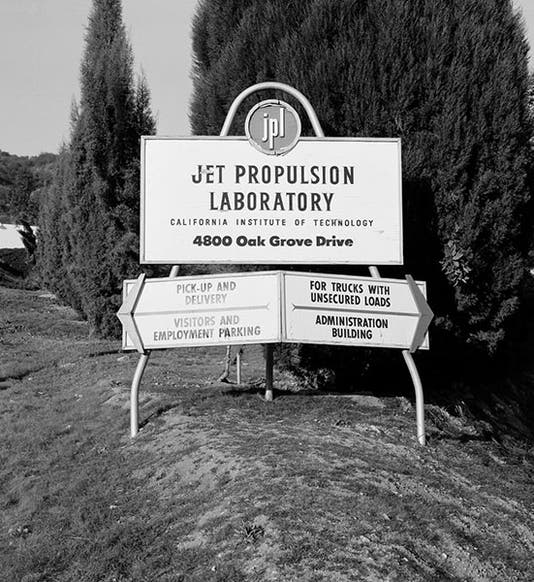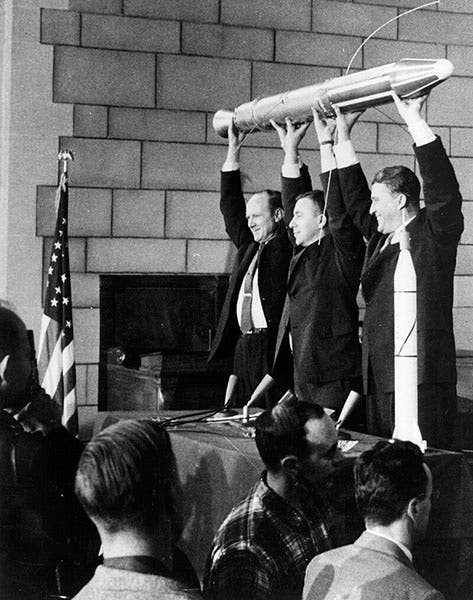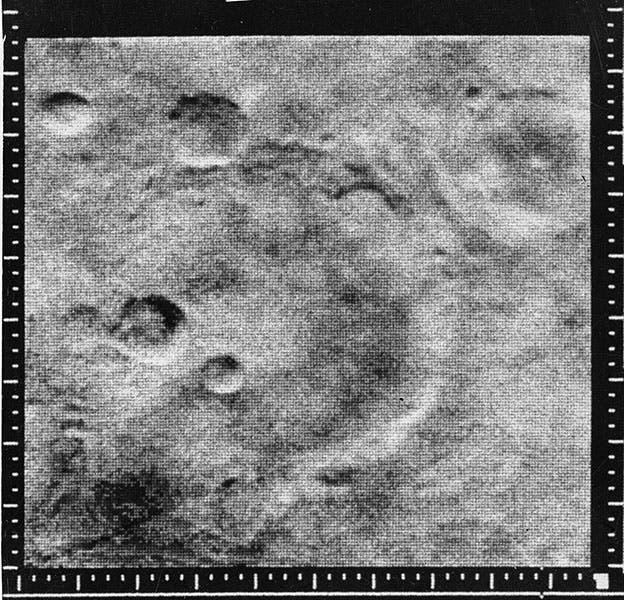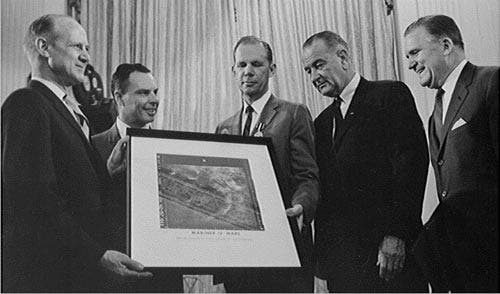Scientist of the Day - William Hayward Pickering
William Hayward Pickering, a New Zealand-born American rocket engineer and administrator, died Mar. 15, 2004, at the age of 93. After growing up in New Zealand, Pickering came to the United States to study at Caltech in Pasadena, and after a group of aerospace engineering students conducted successful rocket launches there and founded Jet Propulsion Laboratory (JPL), Pickering found his calling. He joined JPL during the war, and in 1954, he was made Director. His initial task was to develop the Corporal and Sergeant missiles, the first successful American surface-to-surface ballistic missiles, under contract to the U.S. Army. Pickering also initiated the Explorer program to put a U.S. satellite into orbit. The government opted to back another satellite-insertion program, Vanguard, but when Sputnik was successful (twice) and Vanguard was a bust, the Explorer program was reactivated, and within four months of the rude awakening occasioned by Sputnik 1, the tiny Explorer 1 was placed into orbit, on Jan. 31, 1958. As its only instrument, it carried a Geiger counter, but that was enough for Explorer 1 to detect initial evidence for the existence of protective radiation belts surrounding the Earth, later named for James Van Allen at JPL. A photograph taken the next day shows Pickering, Van Allen, and Wernher von Braun celebrating with a facsimile of Explorer 1 and its final-stage booster (third image).
By the end of that year, JPL became part of NASA, assigned responsibility for developing unmanned spacecraft to explore the solar system. The next big success for JPL and Pickering was the Mariner program. Mariner 2 was a fly-by of Venus, the first probe to approach another planet. A press photograph recorded Pickering and some of the Mariner team presenting a model of Mariner 2 to President Kennedy in 1963 (fourth image). Time magazine placed Pickering on its cover for Mar. 8, 1963, accompanying an article on the success of Mariner 2.
Mariner 4 was launched on Nov. 28, 1964, and was sent toward Mars. This too was a fly-by, but Mariner 4 had cameras on board, and it sent back the first close-up images of a neighboring planet, including one – usually called photo 11 – that showed impact craters on a lifeless Martian surface (fifth image). In yet another publicity event, Pickering presented an enlarged print of photo 11 to President Lyndon B. Johnson (sixth image). Pickering was again on the cover of Time, on July 23, 1965, and this cover we include here, in lieu of a more conventional portrait (second image).
Meanwhile, the Apollo program, which was preparing to send men to the Moon, needed information on the lunar surface, and JPL was placed in charge of two programs, the Ranger program (1961-65), which aimed to crash spacecraft onto the lunar surfaces, taking pictures all the way in, and the Surveyor program (1966-68), which soft-landed seven unmanned spacecraft on the Moon. The history of the Ranger program provides a good example of how an organization (JPL) can suffer disaster after disaster (the first six Rangers were all failures), and learn from those mistakes to produce a spectacular turn-around (Rangers 7,8, and 9 were all unqualified success stories). Since Ranger 7 was the turning point, we show here the last photo taken by one of the wide-field cameras onboard Ranger 7, recorded just two seconds before it impacted the Moon (seventh image). Pickering is usually given much of the credit for effecting this turnaround.
I am guessing that JPL had a compulsory retirement program in place in 1976, when Pickering retired, for I could not see him leaving of his own accord, with the two Viking spacecraft, built and operated by JPL, on their way to Mars, and the two Voyager missions, also under JPL leadership, about to launch in 1977. But retire he did, having had 22 years at the helm during what was truly the Golden Age of JPL and planetary exploration spacecraft.
Administrators are not often given credit when accolades are passed out for science and engineering successes. It is true that sometimes administrators just get in the way, and accomplishments prevail despite their presence, rather than because of them. But when an administrator is really good at motivating a team and choosing the right means and methods, he or she can make all the difference. By general agreement from those involved, that was true of Vannevar Bush and James B. Conant at the Office of Scientific Research and Development during World War II, of Kelly Johnson at Lockheed, and it was especially true of William Hayward Pickering at JPL.
As a parenthetical note, William H. Pickering is not specific enough when researching today’s subject, for there was another American scientist, William Henry Pickering, who distinguished himself as an observational astronomer some fifty years before William Hayward became interested in rockets and spacecraft. We published a post on William Henry just last year.
William B. Ashworth, Jr., Consultant for the History of Science, Linda Hall Library and Associate Professor emeritus, Department of History, University of Missouri-Kansas City. Comments or corrections are welcome; please direct to ashworthw@umkc.edu.













